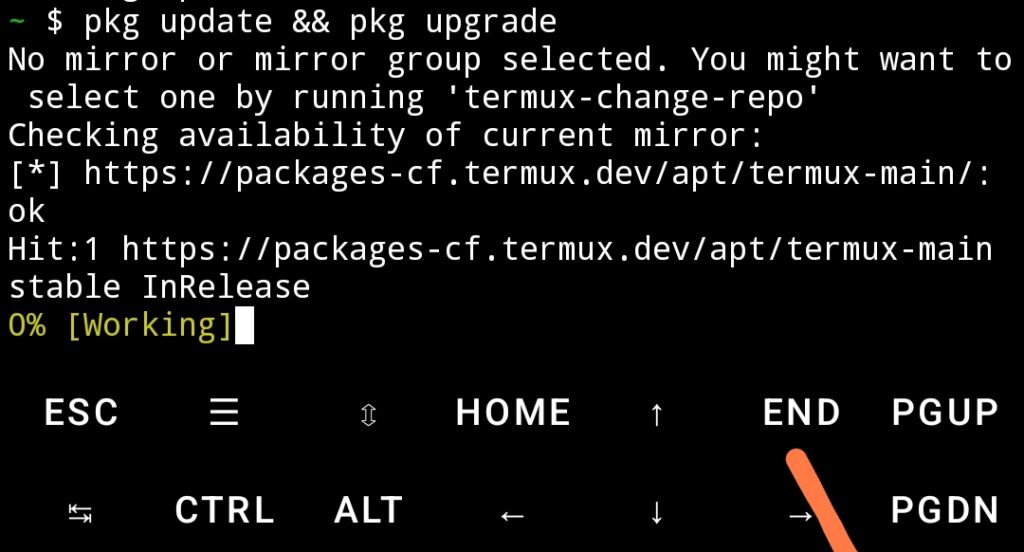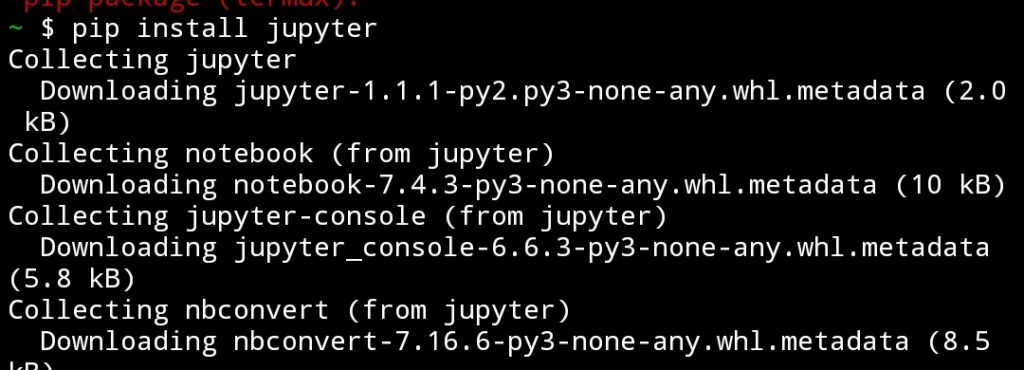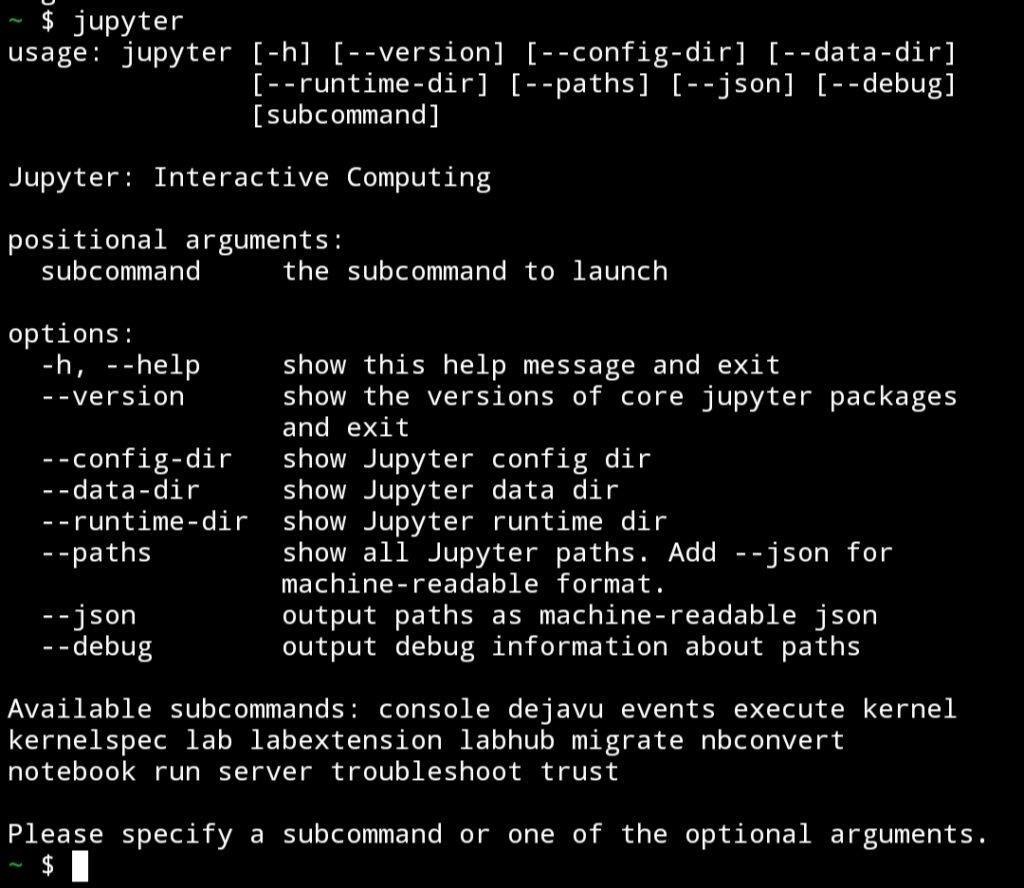How to Install Jupyter Notebook in Termux

Table of Contents
Why Install Jupyter Notebook in Termux?
The Rise of Mobile-First Coding
In an era where smartphones are ubiquitous, the ability to code on mobile devices bridges the gap between convenience and functionality.Install Jupyter Notebook in termux provide an interactive, cell-based interface perfect for iterative coding, while Termux brings a full Linux terminal environment to Android. Together, they enable:
- Learning on the Go: Practice Python during commutes or downtime.
- Rapid Prototyping: Test ideas without needing a laptop.
- Data Analysis Anywhere: Analyze CSV files, APIs, or databases directly from your phone.
- Privacy and Offline Access: No reliance on cloud services or internet connectivity.
Key Benefits
- Zero Cost: Free, open-source tools.
- Lightweight: Runs smoothly on most Android devices.
- Versatility: Supports Python, R, Julia, and more (with additional setup).
Termux Primer: What It Is and Why It Matters
Termux is more than just a terminal emulator—it’s a Linux distribution for Android. Unlike other apps, it provides a package management system (pkg and apt) to install tools like Python, GCC, Node.js, and even servers like SSH or Apache. Key features include:
- No Root Required: Works on unmodified Android 7.0+ devices.
- File System Access: Link to your device’s storage via
termux-setup-storage. - Customizability: Install plugins like Termux:Widget for home screen shortcuts.
Step-by-Step Installation Guide
Step 1: Install Termux
- Source: Download from F-Droid (recommended for updates) .
- Avoid Outdated Versions: Third-party sites may host deprecated builds.
Step 2: Update Packages
Launch Termux and run:
pkg update && pkg upgrade

This ensures all repositories and packages are up to date.
Step 3: Install Python and Dependencies
Termux uses Python 3. Install it alongside critical libraries:
apt install -y git clangapt install -y python
apt install -y libzmq
apt install -y rust
pkg install -y binutils
pip install maturin
apt install -y cmake
pip install pyzmq
_file="$(find $PREFIX/lib/python3.12 -name "_sysconfigdata*.py")"
rm -rf $PREFIX/lib/python3.12/__pycache__cp "$_file" "$_file".backup
sed -i 's|-fno-openmp-implicit-rpath||g' "$_file"

- clang: Compiles Python packages (e.g., NumPy).
- libzmq: Enables Jupyter’s kernel-to-frontend communication.
Step 4: Install Jupyter Notebook In Termux
Upgrade pip first, then install Jupyter:
pip install jupyter

Step 5: Launch Jupyter
Help
jupyter
Start the server with:
jupyter notebook --no-browser --port=8888
- –no-browser: Termux can’t open browsers automatically.
- –port=8888: Ensures the default port is used (change if occupied).
Step 6: Access via Android Browser
After running the command, Termux will output a URL like:
http://localhost:8888/?token=abc123def456
- Copy the URL.
- Open Chrome, Firefox, or any browser on your device.
- Paste the URL to access Jupyter’s interface.
Advanced Configuration
Installing Data Science Libraries
Supercharge Jupyter with essential tools:
pip install numpy pandas matplotlib seaborn scikit-learn
- numpy: Numerical computing.
- pandas: Data manipulation.
- matplotlib/seaborn: Visualization.
- scikit-learn: Machine learning.
Keyboard Shortcuts and Workflow Tips
- Termux Shortcuts:
- Volume Up + Q: Toggle keyboard.
- Volume Up + T: New terminal tab.
- Jupyter Shortcuts:
- Esc + M: Convert cell to Markdown.
- Ctrl + Enter: Execute cell.
File Management
- Link Storage: Run
termux-setup-storageto access photos, downloads, and documents. - Organize Projects: Save notebooks in
~/storage/shared/Documents/jupyterfor easy access.
Virtual Environments
Isolate project dependencies with venv:
python -m venv myenv source myenv/bin/activate pip install jupyter pandas
Optimizing Performance
Managing Android Resources
- Close Background Apps: Free up RAM for smoother Jupyter sessions.
- Limit Cell Outputs: Avoid rendering massive datasets or plots.
Run Jupyter in the Background
- Use Termux:Boot to auto-start Jupyter on device reboot.
- Minimize Termux, and Jupyter will keep running.
Use a Lightweight Browser
Browsers like Kiwi or Firefox Focus reduce memory usage when accessing Jupyter.
Real-World Projects and Examples
Project 1: Analyze CSV Data
- Upload a CSV (e.g.,
sales_data.csv) to Termux’s shared storage. - Load it in Jupyter:pythonCopyimport pandas as pd df = pd.read_csv(‘sales_data.csv’) df.describe()
Project 2: Plot Sensor Data
Visualize smartphone sensor data using matplotlib:
import matplotlib.pyplot as plt
plt.plot([1, 2, 3], [4, 5, 1])
plt.title('Sample Plot')
plt.savefig('plot.png') # Save to Termux storage Project 3: Train a Linear Regression Model
python
from sklearn.linear_model import LinearRegression X = [[1], [2], [3]] y = [2, 4, 6] model = LinearRegression() model.fit(X, y) print(model.predict([[4]])) # Output: [8.]
Troubleshooting Common Issues
Issue 1: “pip install” Fails
- Solution: Install missing dependencies like
libjpeg-turboorlibpng.
Issue 2: Browser Won’t Connect
- Fix: Ensure the URL’s token matches Termux’s output. Use
--ip=0.0.0.0if facing network issues.
Issue 3: Kernel Crashes
- Fix: Limit memory usage or restart the kernel via Jupyter’s UI.
Limitations and Workarounds
Hardware Constraints
- CPU/GPU Limits: Avoid training large neural networks. Use lightweight algorithms (e.g., decision trees).
- Screen Size: Pair with a Bluetooth keyboard or use split-screen mode.
Battery Consumption
- Workaround: Enable battery saver mode or reduce screen brightness.
No Native GUI Support
- Alternative: Use SSH to connect to a remote Jupyter server.
Community and Resources
Termux Communities
- Reddit: r/termux
- GitHub: Explore scripts and plugins.
Conclusion:
Install Jupyter Notebook in Termux on Android exemplify the democratization of technology. What once required expensive laptops and cloud subscriptions can now be done on a $200 smartphone. As mobile hardware advances, the line between mobile and desktop coding will blur further.
By mastering this setup, you’re not just learning to code—you’re future-proofing your skills for a world where flexibility and adaptability reign supreme.
Ready to Code Anywhere?
Grab your Android device, fire up Termux, and start your first Jupyter Notebook today. The only limit is your imagination.
Share your journey with #MobileDataScience on social media, and inspire others to unlock the potential of their pockets!
(This guide was written using Jupyter Notebook in Termux on a Google Pixel 6.)
